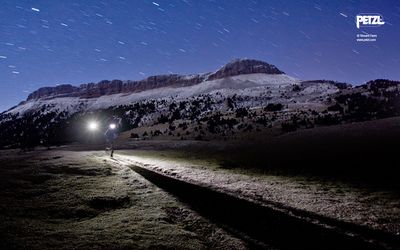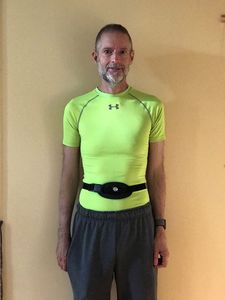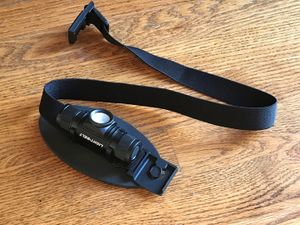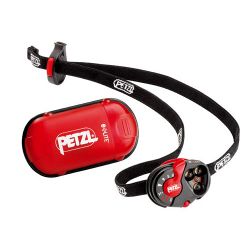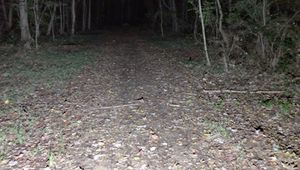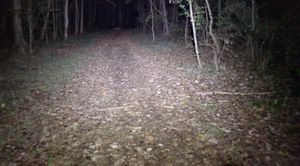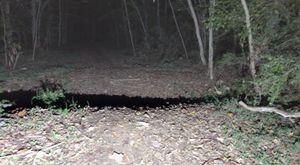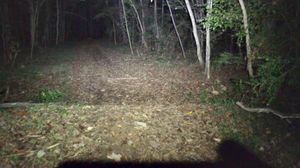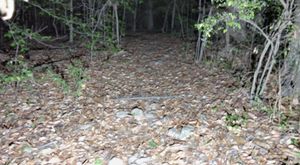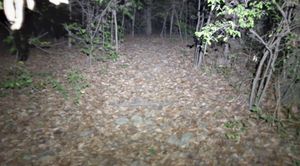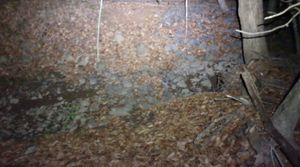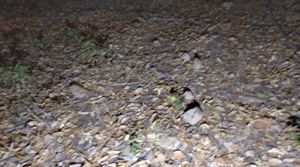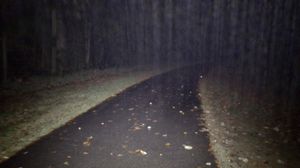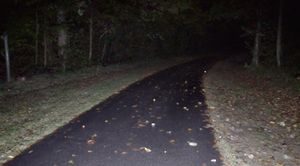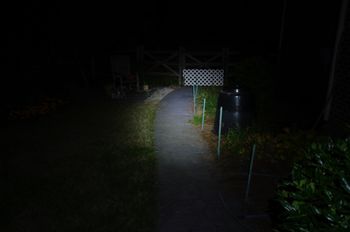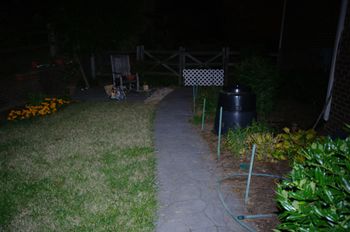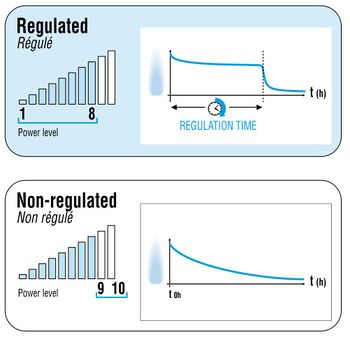Difference between revisions of "Best Running Lights"
User:Fellrnr (User talk:Fellrnr | contribs) (→Recommended Lights) |
User:Fellrnr (User talk:Fellrnr | contribs) |
||
| (18 intermediate revisions by the same user not shown) | |||
| Line 1: | Line 1: | ||
| − | There are many lights | + | [[File:PetzlHeadlampRunningNight.jpg|right|thumb|400px|Image from Petzl Wallpapers.]] |
| − | + | I've run with many different running lights over the years, and I've seen the quality and brightness increase as the cost has fallen. There are many good running lights on the market, but having tested many, there are just three I'd recommend, each for a different purpose. The best light for urban running, when it's more about being seen than seeing, is the Black Diamond Sprinter. It's small, rechargeable, bright, balanced, with an even light, and has a rear flashing red LED built in. However, the light I use most is the Light Belt, a waist mounted light that allows you to see the shape of the ground ahead, and I prefer it even on asphalt. And while I almost never use the Petzl e+lite, it's my faithful "oops" light I carry as a backup. | |
| − | = | + | =Light Belt= |
| − | There are | + | I love waist mounted lights as you can see the shape of the ground so much better. This style of light is relatively rare, and I've been pleased to work with Light Belt as they've developed and refined their product. I found this is the light I've used consistently, even for running on the relatively smooth asphalt of my local Greenway. If you've not run with a waist mounted light, I'd suggest playing around with your head mounted light, taking it off and moving it to your waist and seeing how your perception of the ground ahead of you changes. Once you've made to the switch, it's hard to go back. You can buy them at http://www.light-belt.com. |
| − | + | * On full brightness the beam is brighter than I need (700 lm), so I typically run with it a notch or 2 down. I often run with the light belt at a relatively low intensity, especially just before dawn as it balances the rising light levels and is strangely less claustrophobic. | |
| + | * The light is perfectly smooth and even, and being a waist mounted, shows the shape of the trail and any obstacles so much better than a head mounted light. (I have the "silver lens" version that has the smooth beam pattern. There is a "reflective mirrored" option that has a more focused beam pattern, but I'd recommend the even illumination as a priority.) | ||
| + | * The belt works remarkably well, with almost no bounce. The light sits on a small foam pad for stabilization but uses a thin (1 inch/2.5cm) belt to go around your waist or hips. The clasp a surprisingly clever magnetic system; just bring the 2 ends close together and the magnets click it closed. To unclasp you have to slide the 2 ends vertically, as you can't pull them apart. This seems like a massively overengineered and sophisticated solution, but I love it to bits. It works perfectly no matter how cold and tired I am. | ||
| + | * You don't blind other runners as you turn to look at them, and it's easy to tilt the light so that you can see the ground ahead without shining into people coming towards you. | ||
| + | * The Light Belt comes with the 18650 Lithium Ion 3400 mAh rechargeable battery. These batteries are expensive, so expect to pay over $20 for a genuine one, and watch out for fakes. That said, these batteries are expensive for a reason, having excellent power density and life. Being rechargeable, you can carry spare batteries if you're running all night and need full brightness. (The light works as a recharger for the battery, as the battery itself has overcharge protection. Just plug the micro USB cable into the light.) | ||
| + | As always, there are some downsides to the Light Belt, but relatively few: | ||
| + | * The Light Belt is waterproof to IPX6, so it's fine in heavy rain, but not submersible. This shouldn't be an issue unless you are doing waist deep stream crossings. | ||
| + | * There is no flashing light at the back. I simply purchased some cheap clip-on flashing safety lights which are cheap and effective. | ||
| + | * You can't use a waist mounted light to look at your watch, though most running watches have a backlight. It's also harder to use a waist mounted light to rummage through a drop bag, though I found I can hoist the Light Built up around my chest and pointed down and it works pretty well. | ||
| + | <gallery widths=300px heights=300px class="center"> | ||
| + | File:Light Belt (1).jpg | ||
| + | File:Light Belt (2).jpg | ||
| + | </gallery> | ||
| + | =Black Diamond Sprinter= | ||
| + | The Sprinter is my top pick for head mounted lights, available at <jfs id="B01LE9ZA28" nonl="true" noreferb="true"/>. | ||
| + | * The flashing rear safety light is a great idea, and critical for urban running. The safety light comes on with the main light, but you can override this to turn it on and off independently. | ||
| + | * Having the battery pack at the back balances the weight of the light and makes it seem particularly lightweight. It also allows you to put the batteries under a hat to keep them warm, though that obviously prevents the safety light from being seen. | ||
| + | * There is a strap that goes overhead helps stabilize the light without needing the headband too tight. | ||
| + | * The Sprinter has a regulated output, so it will stay the same brightness until the batteries are nearly flat. (See below.) | ||
| + | * I wish the Sprinter was better waterproofed, but splash proof to IPX4 should be fine in most situations. I've run in it in heavy rain without any issues, so unless you drop it in water you shouldn't have an issue. | ||
| + | There are some drawbacks to the Sprinter: | ||
| + | * The Sprinter only has a diffuse beam pattern, with no spot, though in practice, I've rarely found this to be a problem, even when navigating in the woods. | ||
| + | * For trail running you want the Light Belt or other waist mounted light. | ||
| + | * I'd rather have replaceable AA or AAA batteries rather than a built in rechargeable battery. Replaceable batteries allow me to have more than one set charged up at a time and just swap them over. The built in batteries should last a long time, but when they eventually wear out, you need to replace the light. | ||
| + | [[File:BD Sprinter.jpg|none|thumb|200px|Black Diamond Sprinter.]] | ||
| + | =Petzl e+Lite= | ||
| + | The Petzl e+Lite worth considering as a backup light, but don't use this as your primary light unless weight is of paramount importance. It's not quite bright enough for general use and the lithium batteries are pricy. However, it will fit in the pocket of my Race Ready Shorts, so it makes a great 'oops' light. I carry the e+Lite on all-day, self-supported runs where I think it's unlikely I'll be out after dark. I've misjudged things before, and an emergency light was the difference between getting home and spending the night in a snow storm on exposed fells. The e+Lite is <jfs id="B01KYTR0HM" noreferb="true" nonl="t"/>. | ||
| + | [[File:Petzl e+lite.jpg|none|thumb|250px|The e+Lite showing the small case it fits into.]] | ||
| + | =What to look for= | ||
| + | There are four factors to consider with a running light; location, the beam pattern, regulation and brightness. | ||
==Location== | ==Location== | ||
| − | The | + | The first step in choosing a light is to work out where you want the light; in your hand, at your waist, or on your head. |
| − | + | ===Head Mounted=== | |
| − | + | Most people use head mounted lights, and they have a number of advantages: | |
| − | + | * Head mounted directs the light where you point your head, making it easier to see where you're going. | |
| − | + | * Head mounted also works better for directing the light to things in your hands, like putting on gloves or looking at your [[Best Running Watch| Running Watch]]. | |
| − | |||
| − | * Head mounted directs the light where you point your head, making it easier to see where you're going. Head mounted also works better for directing the light to things in your hands, like putting on gloves or looking at your [[Best Running Watch|Watch]] | ||
| − | |||
* Head mounted lights are better at showing up branches or spider webs that are about to hit your face. | * Head mounted lights are better at showing up branches or spider webs that are about to hit your face. | ||
| − | + | * Most of the lights are head mounted, so you have the widest choice. | |
| − | + | ===Waist Mounted=== | |
| − | Most | + | Waist mounted lights are much better at showing you the shape of the ground, and any obstacles are a lot more apparent. This is because a head mounted light aligned with your eyes so there's few shadows. Below are sets of photos taken with the [https://apps.apple.com/us/app/stabilized-night-camera/id1433896496| Stabilized Night Camera app] that allows for long exposure. |
| − | + | <gallery widths=300px heights=300px class="center" perrow="2"> | |
| − | + | File:Comparing waist and head mounted lights (1).JPG | |
| − | + | File:Comparing waist and head mounted lights (3).JPG | |
| − | + | File:Comparing waist and head mounted lights (4).JPG | |
| − | = | + | File:Comparing waist and head mounted lights (5).JPG |
| − | + | File:Comparing waist and head mounted lights (6).JPG | |
| − | + | File:Comparing waist and head mounted lights (7).JPG | |
| − | + | File:Comparing waist and head mounted lights (8).JPG | |
| − | + | File:Comparing waist and head mounted lights (9).JPG | |
| − | + | File:Comparing waist and head mounted lights (10).JPG | |
| − | + | File:Comparing waist and head mounted lights (11).JPG | |
| − | + | File:Comparing waist and head mounted lights (12).JPG | |
| − | + | File:Comparing waist and head mounted lights (13).JPG | |
| − | |||
| − | |||
| − | |||
| − | |||
| − | |||
| − | |||
| − | |||
| − | |||
| − | |||
| − | |||
| − | File: | ||
| − | File: | ||
| − | File: | ||
</gallery> | </gallery> | ||
| − | + | In rain or dusty conditions, a waist mounted light will not create glare in front of your face. With a head mounted light, the beam picks up the rain or dust, and because of the closeness these particles are brightly lit. It can be hard to see through these spots, and the effect can be quite claustrophobic. It doesn't capture the full difference in visibility, but it gives you a sense of how much easier it is to see in the rain with a waist mounted light. | |
| − | + | <gallery widths=300px heights=300px> | |
| − | + | File:Headlight in the rain.jpg|Headlight in the rain | |
| − | <gallery widths= | + | File:Waistlight in the rain.jpg|Waist mounted light in the rain |
| − | File: | ||
| − | File: | ||
</gallery> | </gallery> | ||
| − | + | If there are insects about, a head mounted light causes them to fly into your face, which is even more unpleasant. | |
| − | == | + | ===Handheld=== |
| − | + | I don't recommend handheld lights for several reasons. The biggest problem is that keeping the light pointed in the right direction changes your arm movement and this messes up your [[Running Form]]. In addition, handheld lights occupy one of your hands making it tricky to do anything in the dark, though knuckle lights overcome this. | |
| − | [[File: | + | ==Beam Pattern – Spot vs Diffuse== |
| − | == | + | {| class="wikitable" |
| − | + | |- valign="top" | |
| − | [[File: | + | |[[File:RXP Spot.jpg |none|thumb|350px| The spot beam illuminates further.]] |
| − | == | + | |[[File:RXP Eye Level.jpg |none|thumb|350px| The diffuse beam illuminates wider and more evenly.]] |
| − | + | |} | |
| − | + | Many lights project a narrow spot beam that illuminates longer distance, which can be handy for navigation, especially on ill-defined trails. Most of the time I prefer a light with an evenly diffused beam, even though it does not reach as far as a spot beam. | |
| + | ==Regulation – Light output over time== | ||
| + | With a regulated light the light intensity will stay constant over most of the life of the battery. When the battery is nearly depleted, the light will rapidly dim (see the graph below.) The regulation is nice, but when the end of the regulation period is reached, the light intensity can drop so quickly that you get caught out. | ||
| + | [[File:Light Regulation.jpg|none|thumb|350px|The difference between regulated and unregulated light output.]] | ||
| + | ==Brightness== | ||
| + | The brightness you need depends on your situation. In many cases you just need to see what's immediately ahead of you, so brightness is not critical. If you're on trails, then a really bright light can help see what direction a trail is taking, or help with navigation. A bright light can also help psychologically, as a small pool of light can become confining and claustrophobic. However, if there's a little more ambient light, then a dim light can work best. A dimmer light can provide enough to shoe you what's ahead without compromising your night vision. Having a light that will go both very bright and very dim is ideal, and several of the lights I recommend can provide both extremes. | ||
Latest revision as of 08:34, 6 November 2019
I've run with many different running lights over the years, and I've seen the quality and brightness increase as the cost has fallen. There are many good running lights on the market, but having tested many, there are just three I'd recommend, each for a different purpose. The best light for urban running, when it's more about being seen than seeing, is the Black Diamond Sprinter. It's small, rechargeable, bright, balanced, with an even light, and has a rear flashing red LED built in. However, the light I use most is the Light Belt, a waist mounted light that allows you to see the shape of the ground ahead, and I prefer it even on asphalt. And while I almost never use the Petzl e+lite, it's my faithful "oops" light I carry as a backup.
Contents
1 Light Belt
I love waist mounted lights as you can see the shape of the ground so much better. This style of light is relatively rare, and I've been pleased to work with Light Belt as they've developed and refined their product. I found this is the light I've used consistently, even for running on the relatively smooth asphalt of my local Greenway. If you've not run with a waist mounted light, I'd suggest playing around with your head mounted light, taking it off and moving it to your waist and seeing how your perception of the ground ahead of you changes. Once you've made to the switch, it's hard to go back. You can buy them at http://www.light-belt.com.
- On full brightness the beam is brighter than I need (700 lm), so I typically run with it a notch or 2 down. I often run with the light belt at a relatively low intensity, especially just before dawn as it balances the rising light levels and is strangely less claustrophobic.
- The light is perfectly smooth and even, and being a waist mounted, shows the shape of the trail and any obstacles so much better than a head mounted light. (I have the "silver lens" version that has the smooth beam pattern. There is a "reflective mirrored" option that has a more focused beam pattern, but I'd recommend the even illumination as a priority.)
- The belt works remarkably well, with almost no bounce. The light sits on a small foam pad for stabilization but uses a thin (1 inch/2.5cm) belt to go around your waist or hips. The clasp a surprisingly clever magnetic system; just bring the 2 ends close together and the magnets click it closed. To unclasp you have to slide the 2 ends vertically, as you can't pull them apart. This seems like a massively overengineered and sophisticated solution, but I love it to bits. It works perfectly no matter how cold and tired I am.
- You don't blind other runners as you turn to look at them, and it's easy to tilt the light so that you can see the ground ahead without shining into people coming towards you.
- The Light Belt comes with the 18650 Lithium Ion 3400 mAh rechargeable battery. These batteries are expensive, so expect to pay over $20 for a genuine one, and watch out for fakes. That said, these batteries are expensive for a reason, having excellent power density and life. Being rechargeable, you can carry spare batteries if you're running all night and need full brightness. (The light works as a recharger for the battery, as the battery itself has overcharge protection. Just plug the micro USB cable into the light.)
As always, there are some downsides to the Light Belt, but relatively few:
- The Light Belt is waterproof to IPX6, so it's fine in heavy rain, but not submersible. This shouldn't be an issue unless you are doing waist deep stream crossings.
- There is no flashing light at the back. I simply purchased some cheap clip-on flashing safety lights which are cheap and effective.
- You can't use a waist mounted light to look at your watch, though most running watches have a backlight. It's also harder to use a waist mounted light to rummage through a drop bag, though I found I can hoist the Light Built up around my chest and pointed down and it works pretty well.
2 Black Diamond Sprinter
The Sprinter is my top pick for head mounted lights, available at Error: Could not parse data from Amazon!.
- The flashing rear safety light is a great idea, and critical for urban running. The safety light comes on with the main light, but you can override this to turn it on and off independently.
- Having the battery pack at the back balances the weight of the light and makes it seem particularly lightweight. It also allows you to put the batteries under a hat to keep them warm, though that obviously prevents the safety light from being seen.
- There is a strap that goes overhead helps stabilize the light without needing the headband too tight.
- The Sprinter has a regulated output, so it will stay the same brightness until the batteries are nearly flat. (See below.)
- I wish the Sprinter was better waterproofed, but splash proof to IPX4 should be fine in most situations. I've run in it in heavy rain without any issues, so unless you drop it in water you shouldn't have an issue.
There are some drawbacks to the Sprinter:
- The Sprinter only has a diffuse beam pattern, with no spot, though in practice, I've rarely found this to be a problem, even when navigating in the woods.
- For trail running you want the Light Belt or other waist mounted light.
- I'd rather have replaceable AA or AAA batteries rather than a built in rechargeable battery. Replaceable batteries allow me to have more than one set charged up at a time and just swap them over. The built in batteries should last a long time, but when they eventually wear out, you need to replace the light.
3 Petzl e+Lite
The Petzl e+Lite worth considering as a backup light, but don't use this as your primary light unless weight is of paramount importance. It's not quite bright enough for general use and the lithium batteries are pricy. However, it will fit in the pocket of my Race Ready Shorts, so it makes a great 'oops' light. I carry the e+Lite on all-day, self-supported runs where I think it's unlikely I'll be out after dark. I've misjudged things before, and an emergency light was the difference between getting home and spending the night in a snow storm on exposed fells. The e+Lite is Error: Could not parse data from Amazon!.
4 What to look for
There are four factors to consider with a running light; location, the beam pattern, regulation and brightness.
4.1 Location
The first step in choosing a light is to work out where you want the light; in your hand, at your waist, or on your head.
4.1.1 Head Mounted
Most people use head mounted lights, and they have a number of advantages:
- Head mounted directs the light where you point your head, making it easier to see where you're going.
- Head mounted also works better for directing the light to things in your hands, like putting on gloves or looking at your Running Watch.
- Head mounted lights are better at showing up branches or spider webs that are about to hit your face.
- Most of the lights are head mounted, so you have the widest choice.
4.1.2 Waist Mounted
Waist mounted lights are much better at showing you the shape of the ground, and any obstacles are a lot more apparent. This is because a head mounted light aligned with your eyes so there's few shadows. Below are sets of photos taken with the Stabilized Night Camera app that allows for long exposure.
In rain or dusty conditions, a waist mounted light will not create glare in front of your face. With a head mounted light, the beam picks up the rain or dust, and because of the closeness these particles are brightly lit. It can be hard to see through these spots, and the effect can be quite claustrophobic. It doesn't capture the full difference in visibility, but it gives you a sense of how much easier it is to see in the rain with a waist mounted light.
If there are insects about, a head mounted light causes them to fly into your face, which is even more unpleasant.
4.1.3 Handheld
I don't recommend handheld lights for several reasons. The biggest problem is that keeping the light pointed in the right direction changes your arm movement and this messes up your Running Form. In addition, handheld lights occupy one of your hands making it tricky to do anything in the dark, though knuckle lights overcome this.
4.2 Beam Pattern – Spot vs Diffuse
Many lights project a narrow spot beam that illuminates longer distance, which can be handy for navigation, especially on ill-defined trails. Most of the time I prefer a light with an evenly diffused beam, even though it does not reach as far as a spot beam.
4.3 Regulation – Light output over time
With a regulated light the light intensity will stay constant over most of the life of the battery. When the battery is nearly depleted, the light will rapidly dim (see the graph below.) The regulation is nice, but when the end of the regulation period is reached, the light intensity can drop so quickly that you get caught out.
4.4 Brightness
The brightness you need depends on your situation. In many cases you just need to see what's immediately ahead of you, so brightness is not critical. If you're on trails, then a really bright light can help see what direction a trail is taking, or help with navigation. A bright light can also help psychologically, as a small pool of light can become confining and claustrophobic. However, if there's a little more ambient light, then a dim light can work best. A dimmer light can provide enough to shoe you what's ahead without compromising your night vision. Having a light that will go both very bright and very dim is ideal, and several of the lights I recommend can provide both extremes.
